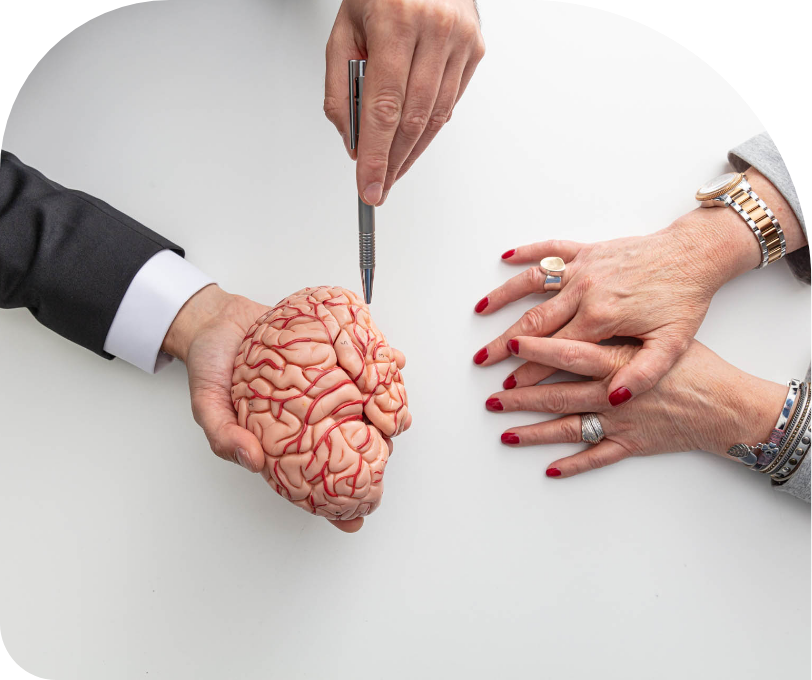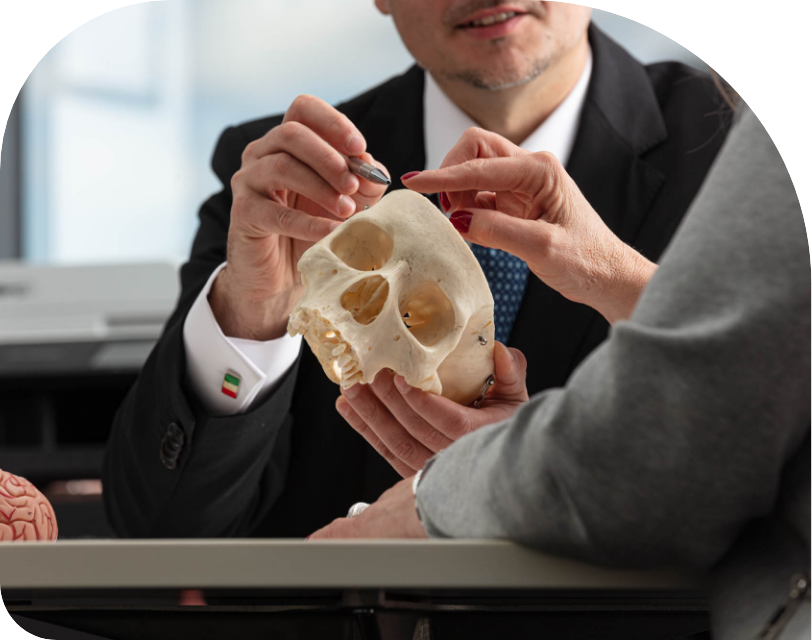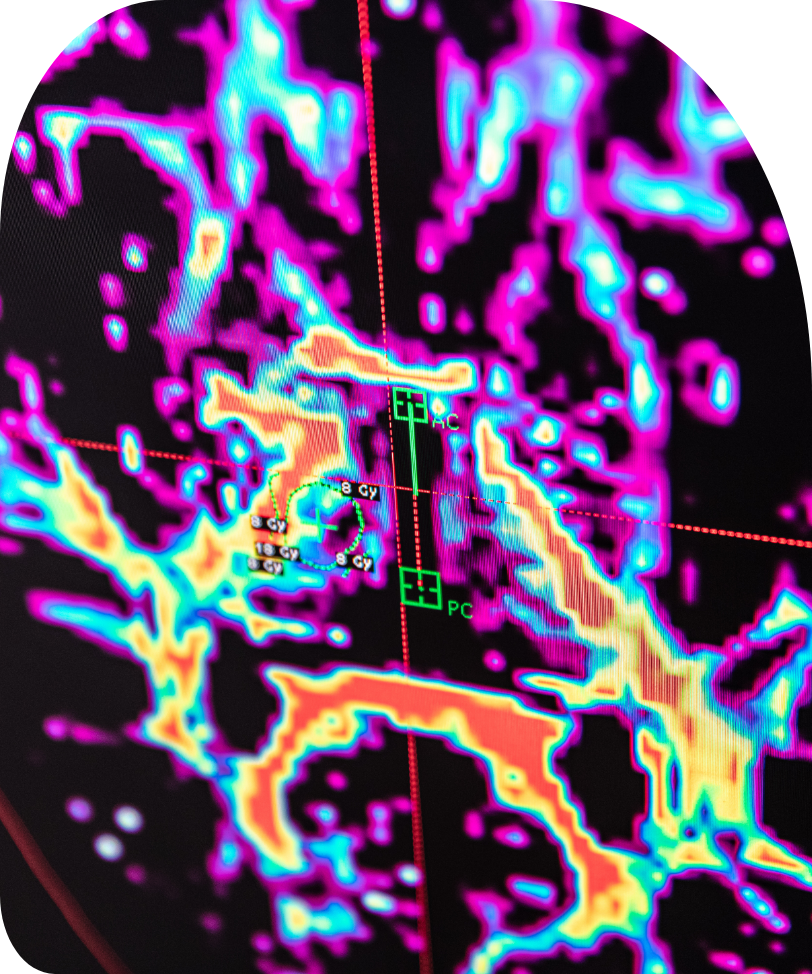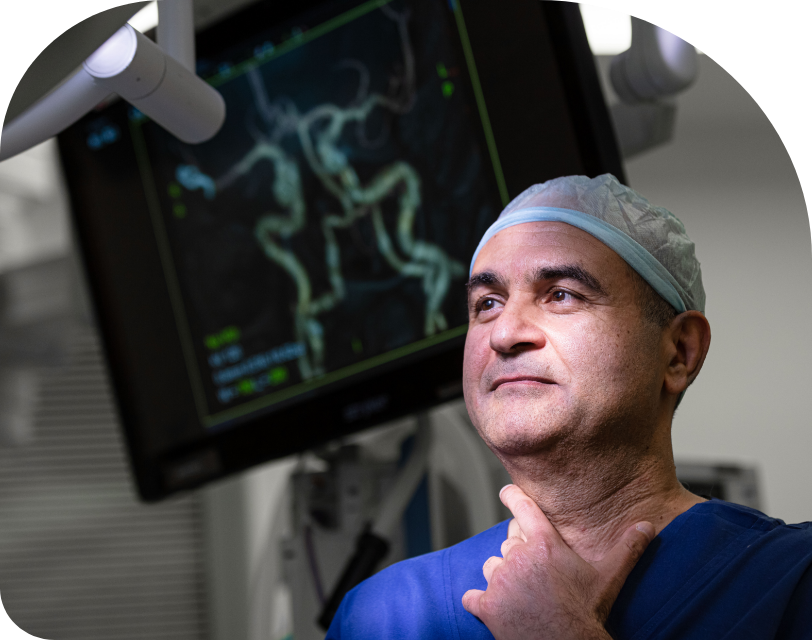Trigeminal Neuralgia & Hemifacial Spasm

What are the cranial nerves, and what do they do?
The cranial nerves are 12 pairs of nerves that come directly from the brain.
Cranial nerves are symmetrical (on the right and left side), and each cranial nerve performs specific functions.
The 12 cranial nerves, and their main functions, are summarised here:
This is responsible for the sense of smell.
This is responsible for vision.
This nerve supplies most of the muscles that move the eye. It also controls the size of the pupil.
This nerve supplies one of the muscles of eye movement, called the superior oblique muscle.
This nerve is mainly responsible for sensation on the face. It separates into 3 branches that supply the upper, middle, and lower part of the face. The lower branch of the trigeminal nerve also supplies most of the chewing muscles.
This nerve controls one of the muscles of eye movement, called the lateral rectus muscle.
The main function of this nerve is to control the muscles of facial expression. It is also mostly responsible for the sense of taste.
This nerve is responsible for hearing and balance.
Has several functions, including sensation of the throat.
This nerve has many functions. The vagus nerve helps to control involuntary muscles in chest and abdominal organs, and also supplies most of the muscles of the throat.
This nerve supplies muscles in the neck and upper shoulders.
This nerve supplies most of the muscles of the tongue.

What is Cranial Nerve Syndrome?
A cranial nerve syndrome, or cranial nerve disorder, is when one of the twelve cranial nerves is not functioning properly.
Symptoms vary depending on the cranial nerve involved, and could include pain, tingling, numbness, weakness, or paralysis of the affected area. A cranial nerve disorder could affect the muscles of eye movement, the size of the pupil, or vision.
A cranial nerve disorder could be caused by an abnormality in the brain (such as a stroke, aneurysm, or tumour), or an abnormality anywhere along the course of the involved nerve. Sometimes, a cranial nerve disorder is the first symptom of an underlying brain disorder.

What are the most common Cranial Nerve Syndromes?
Bell’s palsy is a disorder of the 7th cranial nerve that causes one side of the face to droop. Bell’s palsy is usually caused by a viral infection and tends to resolve within a few months. The 7th cranial nerve could also be affected if a person has a stroke.
Disorders of the 3rd, 4th or 6th cranial nerve affect eye movement (and/or the pupil and eyelid). These disorders could cause double vision, a squint, or an enlarged pupil and drooping eyelid. In some cases, an abnormality in the 3rd, 4th or 6th cranial nerve could indicate an underlying neurosurgical emergency (such as a brain aneurysm). In other cases, one of these cranial nerve disorders could occur due to poorly controlled high blood pressure or diabetes.
A disorder of the 5th cranial nerve can cause troubling pain in the face, known as trigeminal neuralgia.
How are Cranial Nerve Syndromes diagnosed?
Macquarie Neurosurgery and Spine spend time with patient’s asking about their medical history, and will perform a thorough physical examination. Depending on the findings, a CT or MRI scan of the brain may be necessary. Other tests that measure nerve function, like electromyography (EMG), may also be required.

How are cranial nerve disorders treated?
Treatment of a cranial nerve disorder depends on its underlying cause. Some cranial nerve disorders may be treated with medication, while others require surgery. Our specialists at Macquarie Neurosurgery & Spine will discuss each patient’s condition in detail and will answer any questions they may have.
